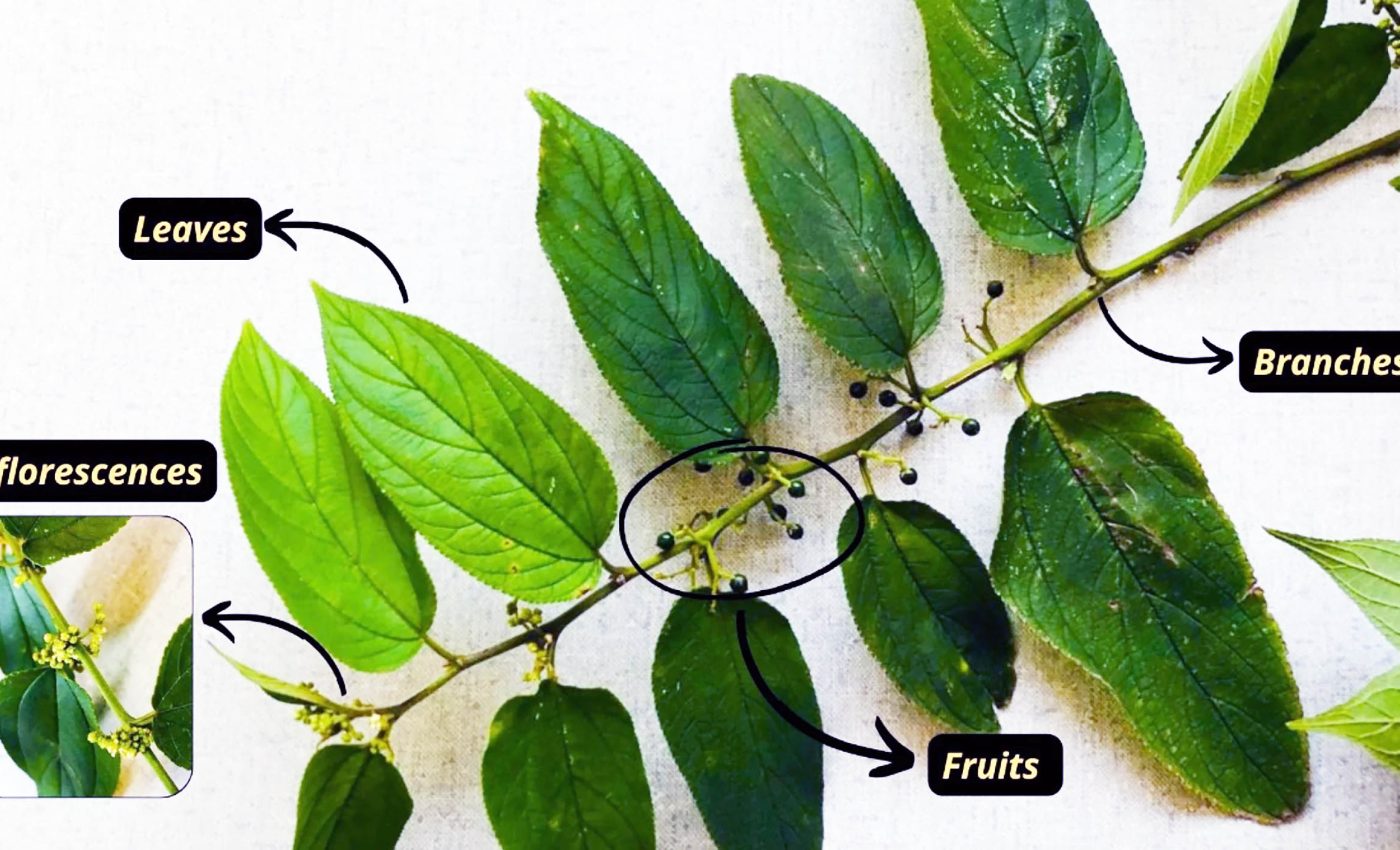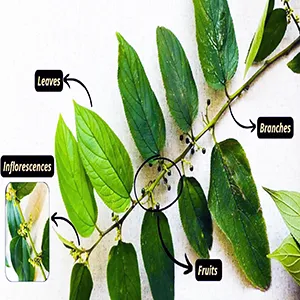
Tropical weed discovered that contains the same CBD compound as cannabis plants
In the dense greenery of Brazil’s Atlantic coast, botanists have long walked past a drab shrub called Trema micrantha Blume. Until recently, no one suspected its berries and blossoms contained an active ingredient already worth billions of dollars worldwide.
That compound is cannabidiol (CBD), widely studied for easing seizures, anxiety, and chronic pain without the mind-altering high of marijuana.
The possibility of harvesting CBD from a fast-growing plant that governments do not regulate as tightly as cannabis could reshape both agriculture and medicine.
Hemp farms in the United States, for example, need extensive licensing, testing, and security. Trema micrantha, by contrast, spreads like a roadside weed and grows from seed to flowering in a single tropical season.
Trema micrantha – New CBD source
Brazilian molecular biologist Dr. Rodrigo Moura Neto, working at the Federal University of Rio de Janeiro, confirmed that Trema fruits and flowers carry measurable CBD while lacking tetrahydrocannabinol (THC), the chemical that produces a marijuana high.
“It was wonderful to find a plant with CBD but without THC, because you avoid all the mess around psychotropic substances,” he says. “That means the potential is enormous.”
Using ultra-high-performance liquid chromatography and high-resolution mass spectrometry, his team pinpointed the cannabinoid profile with far more sensitivity than older methods could offer.
The work builds on research that once found similar molecules in a related Thai shrub but never led to commercial production.
Why Trema micrantha stands out
Early tests show the plant’s berries hold far more CBD than its leaves or stems.
Importantly, THC remains below detection limits across samples, meeting strict rules in places where any psychoactive trace would block retail sales. That feature alone could save processors the costly step of purifying extracts to strip out THC.

Size also helps. A mature shrub can top 66 feet, offering biomass well beyond what a typical hemp plant yields in regions where heat, pests, or legal hurdles keep hemp acreage low.
“Lots of companies have been calling, looking to collaborate,” says laboratory director Rosane Silva, who refers to their new subject as the “magical plant.”
From weed to wellness
CBD already supports one U.S. Food and Drug Administration–approved drug, Epidiolex, prescribed for rare childhood epilepsies.
Dozens of trials are probing benefits for autism spectrum disorders, post-traumatic stress, and inflammatory diseases.
Yet patients in many countries still import CBD oils at steep prices because medical marijuana remains illegal to cultivate.
Brazil reflects that tension. Judges there often grant individual patients permission to receive cannabis-derived CBD, but growers must keep operations abroad.
If Trema proves a viable domestic source of CBD without THC, supply chains could shorten, prices could fall, and courts might see fewer emergency petitions.
Funding and next steps
A public grant worth 500,000 BRL (104,000 USD) now fuels the next phase: perfecting extraction methods and running preclinical tests.
Dr. Moura Neto is also navigating patents for the techniques – though not for the plant itself. “If I dreamed of being a billionaire, I wouldn’t have become a professor,” he says.
Patenting a process rather than the species allows researchers worldwide to study Trema micrantha genetics, cultivation, and pharmacology.
Open science may accelerate breeding programs to boost cannabinoid content, just as decades of selective crossing transformed hemp into today’s high-CBD, low-THC cultivars.
More questions about Trema micrantha
Even with strong CBD levels in fruit, overall yield per acre currently trails specialized hemp varieties by orders of magnitude.
Agronomists must learn whether fertilizer regimens, pruning schedules, or controlled stress can nudge Trema’s metabolic pathways toward richer resin production.
Meanwhile, pharmacologists will compare therapeutic potency head-to-head against cannabis-derived CBD. As Dr. Moura Neto cautions, CBD from Trema micrantha “might not work as well, or at all.”
Clinical trials will span five to ten years if early toxicology proves safe. Extraction facilities must also demonstrate that oil from Trema meets pharmacopeia purity standards and remains stable on shelves.
The business landscape
Market analysts valued global CBD sales at nearly $5 billion last year and project more than $47 billion by 2028. Those figures catch the eye of pharmaceutical firms, cosmetics brands, and food-and-beverage startups alike.
THC-free sourcing could let companies bypass patchwork legislation that still treats cannabis as a controlled drug.
Brazil’s vast territory offers another advantage: the climate supports year-round growth near the equator, reducing greenhouse heating costs common in northern latitudes. Fast turnover from seed to fruit may allow three harvests per year, lowering production costs further.
Trema micrantha and CBD’s future
A shrub once written off as a nuisance now invites plant scientists, chemists, and economists to rethink how CBD reaches medicine cabinets.
If ongoing studies confirm effectiveness and scalable yield, hemp might share the cannabinoid spotlight with its newly famous cousin.
For now, anyone tempted to roll the leaves should heed Dr. Moura Neto’s warning: “That definitely won’t do anything for you.”
The journey from laboratory bench to pharmacy shelf is never short, yet Trema micrantha shows that valuable molecules sometimes hide in the least glamorous corners of a forest.
With steady research funding and open collaboration, a weed could join the wellness industry – without the legal smoke clouds that follow its more notorious relative.
The full study was published in the journal Scientific Reports.
—–
Like what you read? Subscribe to our newsletter for engaging articles, exclusive content, and the latest updates.
Check us out on EarthSnap, a free app brought to you by Eric Ralls and Earth.com.
—–













